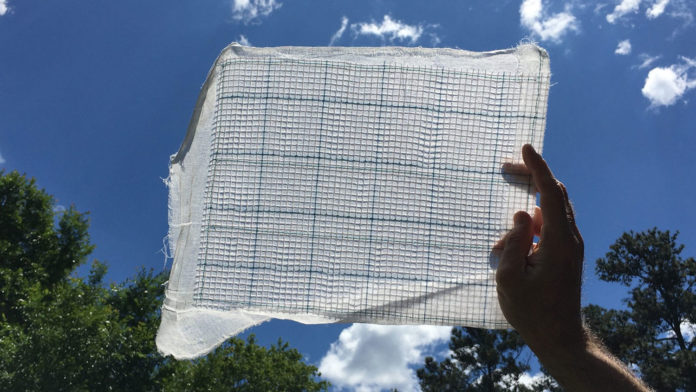Worldwide scientists are working to discover carbon dioxide (CO2) capture techniques for lowering this primary driver of climate change.
Now, North Carolina State University researchers have discovered a way to filter CO2 from flue gas emissions at promising rates. For this, they are using a sheet of treated cotton, which converts CO2 gas into bicarbonate.
Researchers created this filter by dunking a two-layer sheet of cotton in a solution containing a crustacean-derived material ‘chitosan’. This chitosan acts as a glue and helps in trapping a naturally occurring enzyme called carbonic anhydrase…causing it to stick to the fabric.
For testing this filter, they rolled it into a spiral, and then they stuff it inside a tube. The air mixture made up of CO2 and nitrogen was then pumped through the tube, along with a water-based solution.
When CO2 reacted with the water and the carbonic anhydrase, most of the CO2 was converted into liquid bicarbonate. This liquid bicarbonate then drips down the filter and the tube for collection.
It is a big success. Researchers found that on pushing air through the filter at a rate of 4 liters per minute, they could pull out 52.3% of CO2 with a single-stacked filter, and 81.7% with a double-stacked filter. Moreover, the filter worked well even after five cycles of washing, drying, and storing.
“With this technology, we want to stop carbon dioxide emissions at the source, and power plants are the main source of carbon dioxide emissions right now,” said the study’s lead author Jialong Shen. “We think the main advantage of our method compared to similarly targeted research is that our method could be easily scaled up using traditional textile manufacturing facilities.”







